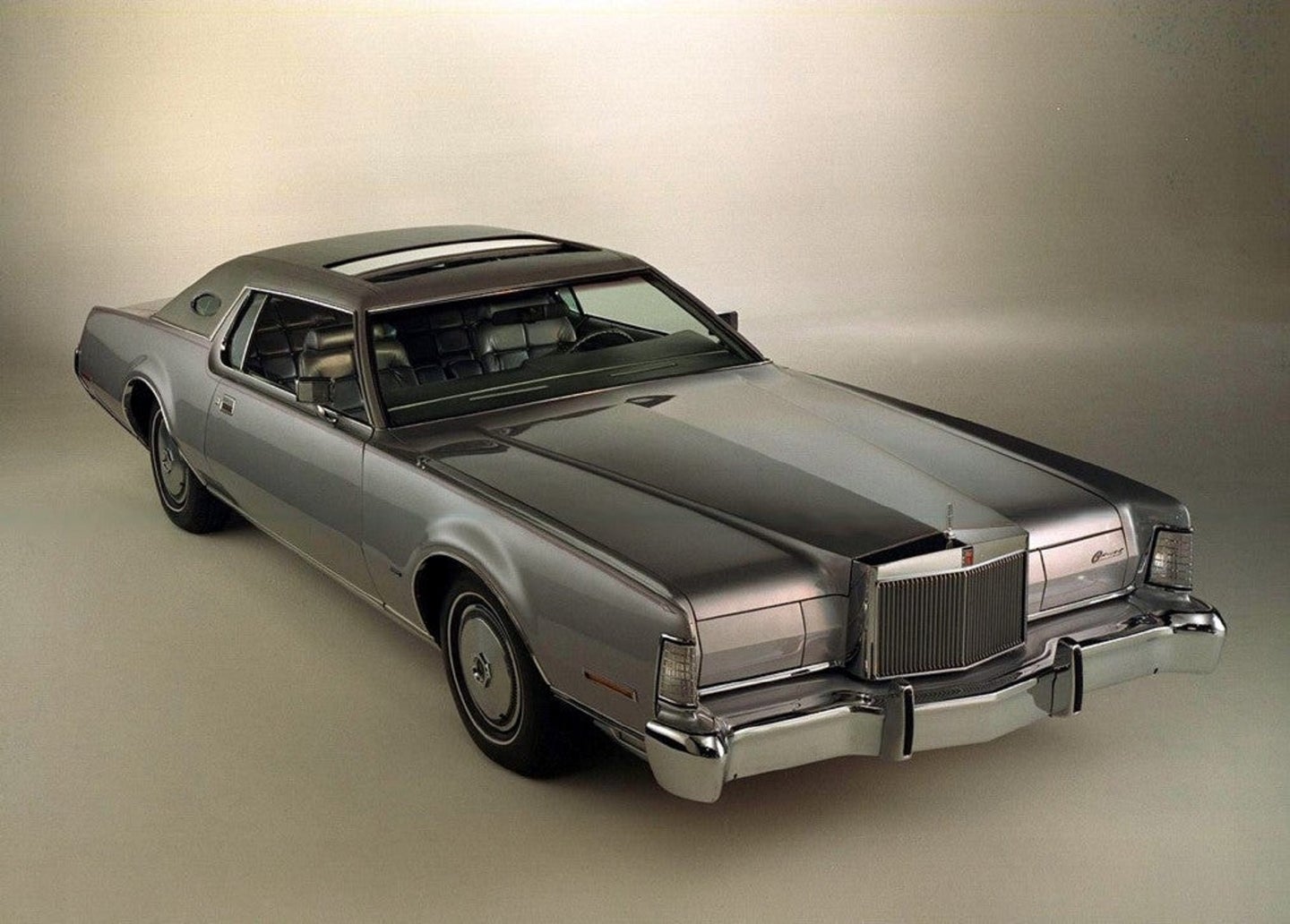You probably don’t know the difference between a moonroof and a sunroof
Welcome to the fascinating world of mildly open-top motoring.

This story was excerpted from Car Bibles.
This might be one of automotive culture’s most hard-fought battles, and it’s lasted a good, long while: Is it sunroof or moonroof?
Cadillac was the first to offer a solid metal roof on an automobile all the way back in the late-1920s with its “turret top” design. Not long after that, the Pytchley Sliding Roof was patented, which was a sliding roof mechanism covering that opened up the outside world to encased-in-metal occupants.
However, Ford coined the term moonroof in 1973 with the Lincoln Continental Mark IV. Since then, people have largely used that and the term sunroof pretty interchangeably, and now most people freely wield them around without knowing what actually separates the two.
Depending on who you ask, some folks even hold very aggressive opinions about which is the proper term. If they happen to berate you for your alleged misuse, over the internet or in person, promptly and politely inform them that they should go outside more. Maybe get some better hobbies.
Again, sunroof and moonroof are generally considered to be synonyms in this day and age. But if you’d like to know more about these terms’ origins, as well as what their actual difference is, do read on.
What is a sunroof?
This is actually on the easier side of automotive terminology to define. Fortunately, we haven’t dragged you into a discussion about what four-way adjustable coilovers are and how they’re used (though, we’ll gladly cover that in a future post).
Sunroof: a hard metal hatch opening, where Mother Nature’s light and outside oxygen cannot be enjoyed if closed.
What is a moonroof?
Moonroof: a glass version of the former, which enables occupants to at least see light through, whether tinted or not, when closed. If we go with these definitions, most modern cars actually have moonroofs because nearly all of them have a glass panel.
It’s really that simple, though there are some varieties of these that ought to be touched on.
For those familiar with the classification of living organisms, moonroofs and sunroofs are a part of the same family (rooftop methods of enjoying the outside world), they’re in separate genuses, and then there are various species (or, I guess versions) of each. I’m talking about t-tops, wicked-rad retractable t-tops, that wild electrochromic technology McLaren puts in their supercars, retractable canvas tops, glass moonroofs with sunshades that never fully cut out natural light, and more.
Again, the terms are basically interchangeable these days and come down to each car company’s marketing more than anything else. That’s why you shouldn’t take this debate too seriously. Meaning, if you prefer using the term sunroof, don’t go picking fights with moonroof-saying folks on the internet.
Who coined the terms sunroof and moonroof?
As we touched on earlier, the sunroof was first invented by Pytchley with their Sliding Roof, and could be installed on any car. True visionaries, whose sword was taken up by American Sunroof Company many years later.
Then, in the early ’70s, Ford marketing suit John Atkinson came up with the following neat piece of ad copy: “When open, you see the Moon and it sees you, but when closed only you have the view.” Sounds like it should be crooned by Sinatra, doesn’t it?
The Lincoln Mark IV, in addition to possessing an overall length that rivals the Ever Given, was the purpose of that copy, as it featured an honest to goodness glass roof that could be opened and closed.
What time period did sunroofs and moonroofs originate?
Besides the sunroof’s original era, and the moonroof first coming as available original equipment from Ford, we think the golden era of the sun- and moonroof is the 1970s.
There’s one solid, good reason why, too: Smokey and the Bandit. This cult classic film came out in 1977 and featured the 1976 Pontiac Firebird Trans Am, the first vehicle to possess the most badass variation of letting in more natural light and air: the t-top. For production, the units used were denoted as 1977 model year Trans Ams, but were actually 1976 models due to possessing 455 cubic inch V8s and all appropriate 1977 visual updates.
Not only were t-tops an epic invention in the 1970s, but it was also when American Sunroof Company was well in-grained in automotive culture, giving folks the opportunity to cut holes in their own gigantic land yachts.
What car models currently feature a sunroof or moonroof?
The short, polite answer: a lot. Nearly any new car can be optioned this way these days. The Ford Mustang Mach-E, BMW M235i Gran Coupe, Cadillac CT5, Range Rover Sport, Kia Stinger, Honda Civic, Jaguar F-Pace, Hyundai Veloster N, Toyota GR86, and so many more.
In fact, you’d be hard-pressed to find a model that doesn’t have the option, unless it’s a true convertible or some kind of high-end sports car with a carbon-fiber roof for improved weight balance and chassis rigidity. Cars like the BMW M2 CS, BMW M5 Competition, Lexus RC F Fuji Speedway Edition, McLaren 620R, BMW M3, and more don’t have sunroofs for this very purpose.
Read the rest of the explainer over at Car Bibles.